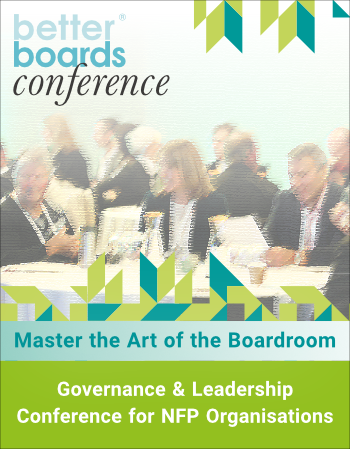book-review
Financial Statements Demystified — Book Review
Published: June 23, 2013
Read Time: 3 minutes

David Hey-Cunningham’s Financial Statements Demystified was written for business and non-profit leaders who have a limited formal understanding of financial statements and accounting principles.
With this book, Hey-Cunningham seeks to provide readers with a basic introduction to these matters in order to assist them to better understand their organisation or business and, in turn, for those enterprises to become more successful and sustainable. Although this text is not specifically aimed at non-profit organisations it is invaluable as an Australian resource on financial statements and financial management that is easily as relevant to the non-profit sector as to the business world.
Hey-Cunningham talks about accounting as a language; it is a means of describing and communicating about your organisation. If you aren’t fluent in the language, you can’t participate fully in the conversation and you can’t effectively lead the organisation. Hey-Cunningham endeavours to instil readers with an appreciation of this language and its importance in addition to his primary aim of imparting practical skills.
David Hey-Cunningham, a chartered accountant, has operated his own training and consulting business since 1991. Hey-Cunningham specialises in helping organisations and individuals to embrace the importance of financial principles for informed decision-making. In the opening chapter, Hey-Cunningham shares that he has written this book in response to the “frightening level of business failures” that he attributes largely to poor financial management. Hey-Cunningham advises leaders to be proactive in ensuring that they have a thorough understanding of accounting or employ a trained professional to oversee their finances. He also reproves business owners or manager who think they know everything about accounting and cause their businesses to fail through insufficient.
Chapters 1 and 2 offer a basic introduction by covering some fundamental accounting principles, the purpose of financial statements and outlining the attitude and approach of the rest of the text. Hey-Cunningham encourages readers who already posses some understanding accounting basics to skip these chapters and head straight into Chapter 3: The rules, a discussion of the origins of accounting and its basic rules and framework. Financial Statements Demystified features a comprehensive hypothetical case study that is drawn on over several chapters after its introduction in Chapter 4. Hey-Cunningham’s graphs and diagrams demonstrate his ideas effectively and are well annotated. It is always clear why he is using a particular graph or diagram and how it relates to the surrounding content.
Hey-Cunningham successfully balances between introductory content, informative discussion and practical instruction without ever adopting a condescending manner. The simplest concepts such as the different types of business models are proffered alongside a detailed explanation of ratios and the intricacies of a small business. The book is instructional, but it is also insightful. Hey-Cunningham doesn’t simply force his accounting advice upon readers, but opens them up to the principles and values it encompasses.
It’s difficult to overplay the value of a book like this. Financial Statements Demystified is both uniquely Australian and highly practical and actionable. Although it is not specifically directed at the non-profit sector, it does not ignore or disregard non-profit organisations and Hey-Cunningham often takes care to make particular reference to them. Inevitably, there is some content that may not be relevant or advisable for non-profit organisations but it usually offers advise and explains concepts and terminology that are universal to different types of organisations and adaptable for different circumstances.
Financial Statements Demystified is a suitable resource for professionals in the non-profit sector at any level. Its overarching but comprehensive approach to financial statements means that it is particularly useful to boards as a reference text for both new and more experienced board members.
Published by Allen & Unwin, 2006. 368 pages.
Share this Article
Recommended Reading
Recommended Viewing
Author
-
Former Researcher
Better Boards
- About
-
At the time of writing Julia was a writer and researcher at Better Boards. She has a passionate interest in the non-profit sector, particularly its legal and regulatory complexities and she follows all news and developments in this area keenly. Prior to joining Better Boards, Julia served as an intern at Philanthropy Australia. Julia has a Bachelor of Arts from the University of Melbourne, majoring in Political Science and English Literature.
Found this article useful or informative?
Join 5,000+ not-for-profit & for-purpose directors receiving the latest insights on governance and leadership.
Receive a free e-book on improving your board decisions when you subscribe.
Unsubscribe anytime. We care about your privacy - read our Privacy Policy .







